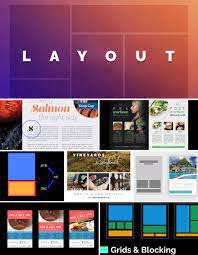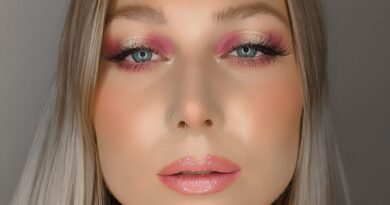Free Assistant Fashion Designer Course(1year Diploma)

An Assistant Fashion Designer is a job role committed to study, analysis, conceptualization, anticipation and finally creation of designs that appeal.
Brief Job Description:- The span of jobs for an excecutive fashion designer involves market study, perceiving trends underline, predict and forecast trends setting in for season forthcoming, identify theme, create mood board based on theme, develop designs for entire range of products in relation to the theme and subsequently to generate techpack for each style within the range of products. Finally to work with team to develop a prototype based on techpack.
Personal Attributes:-He/she should have flair for art and drawings. He/she should have basic mathematical skills, particularly making calculations and measuring. He/she should possess good written and excellent oral communication skills. He/she should be patient for strenuous long hours of working under stringent deadlines. He should be highly imaginative, creative, analytic and man of voracious readings and keen listener too Assistant Fashion Designer Course.
Carry out research on fashion design trends, analysis and consolidation of trend and forecast, developing design brief and getting it approved Assistant Fashion Designer Course:-
PC1. Conduct market research for trends and forecast from various sources such as forecasting sites like WGSN, forecast catalogues, etc. for garment design and extract a theme/inspiration from them
PC2. Develop theme, client, forecast and mood boards and extract the key elements from them which is intended to be put in the garment designas per the instructions given
PC3. Identify, develop, collect and maintain the swatches of the fabrics, trims and accessories that are required for design development
PC4. Identify fabric (print, embroidery and dye)and garment manufacturing techniques and process steps in converting a design to a garment
PC5. Get approval from the concerned heads in context of the design collection made, fabrics, trims and accessories intended to use and the manufacturing techniques to be used to develop a garment
Developing techpack, proto and fit samples as per customer requirements:-
PC1. Prepare techpack with details like specs of the garment, type of fabric, colour of fabric, type of trims and accessories, etc. including processes used and materials employed
PC2. Review techpack in consultation with the client and design review team with respect to the availability of the concerned materials in the market, organization’s ability to manufacture that design, labour skills, etc.
PC3. Identify and summarize the involvement of pattern maker, tailor, merchandiser, sourcing supervisor, etc.with respect to developing proto and fit samples
PC4. Develop proto and fit samples as per the revised techpack for a particular style
PC5. Fill the cost sheet of the style in the given format after consulting various departments Assistant Fashion Designer Course.
Evaluation the design development process and complete documentation Assistant Fashion Designer Course:-
PC1. Check proto sample in relation to techpack and/or client’s input with respect to the measurements PC2. Check proto sample for design (woven/print), and attributes like washability, utility, etc.
PC3. Review proto sample in consultation with the client and/or review team
PC4. Amend/modify proto sample as per review inputs
PC5. Get approval of the proto sample from client
PC6. Prepare file of the approved sample containing approved fabric swatches, accessories, techpack, costsheet etc.
Hazards and risks associated with the process, medical emergencies and evacuation process:-
PC1. Keep vigilance for potential risks and threats associated with workplace and equipment like physical injuries from scissors, shears, etc.
PC2. Handle tools and equipments like cutter, scissors, shear, etc. safely and securely
PC3. Check the workplace and work processes for potential risks and threats like fire, electric shock, etc.
PC4. Participate in mock-drills/evacuation procedures organized at the workplace
PC5. Undertake first-aid, fire-fighting and emergency response training
Comply with industry, and organizational requirements Assistant Fashion Designer Course:-
To be competent, the user/individual on the job must be able to:
PC1. Carry out work functions in accordance with legislation and regulations, organizational guidelines and procedures
PC2. Seek and obtain clarifications on policies and procedures, from your supervisor or other authorized personnel
PC3. Apply and follow these policies and procedures within your work practices Assistant Fashion Designer Course.
PC4. Provide support to your supervisor and team members in enforcing these considerations
PC5. Identify and report any possible deviation to these requirements
Guidelines for Assessment:-
- Criteria for assessment for each Qualification Pack will be created by the Sector Skill Council. Each Performance Criteria (PC) will be assigned marks proportional to its importance in NOS. SSC will also lay down proportion of marks for Theory and Skills Practical for each
PC 2. The assessment for the theory part will be based on knowledge bank of questions approved by the
SSC 3. Individual assessment agencies will create unique question papers for theory part for each candidate at each examination/training center (as per assessment criteria below)
4. Individual assessment agencies will create unique evaluations for skill practical for every student at each examination/training center based on this criteria
5. To pass the Qualification Pack, every trainee should score a minimum of 70% aggregate in a QP
6. In case of successfully passing only certain number of NOS’s, the trainee is eligible to take subsequent assessment on the balance NOS’s to pass the Qualification Pack
(Plan and prepare design collections) Assistant Fashion Designer Course:-
PC1. Conduct market research for trends and forecast from various sources such as forecasting sites like WGSN, forecast catalogues, etc. for garment design and extract a theme/inspiration from them Assistant Fashion Designer Course.
PC2. Develop theme, client, forecast and mood boards and extract the key elements from them which is intended to be put in the garment design as per the instructions given
PC3. Identify, develop, collect and maintain the swatches of the fabrics, trims and accessories that are required for design development
PC4. Identify fabric (print, embroidery and dye) and garment manufacturing techniques and process steps in converting a design to a garment
PC5. Get approval from the concerned heads in context of the design collection made, fabrics, trims and accessories intended to use and the manufacturing techniques to be used to develop a garment
(Develop proto and fit samples) Assistant Fashion Designer Course:-
PC1. Prepare techpack with details like specs of the garment, type of fabric, color of fabric, type of trims and accessories, etc. including processes used and materials employed Assistant Fashion Designer Course.
PC2. Review techpack in consultation with the client and design review team with respect to the availability of the concerned materials in the market, organization’s ability to manufacture that design, labour skills, etc
PC3. Identify and summarize the involvement of pattern maker, tailor, merchandiser, sourcing supervisor, etc. with respect to developing proto and fit samples
PC4. Develop proto and fit samples as per the revised techpack for a particular style
PC5. Fill the cost sheet of the style in the given format after consulting various departments

(Evaluate design development process):-
PC1. Check proto sample in relation to techpack and/or client’s input with respect to the measurements
PC2. Check proto sample for design (woven/print), and attibutes like washability, utility, etc
PC3. Review proto sample in consultation with the client and/or review team
PC4. Amend/modify proto sample as per review inputs
PC5. Get approval of the proto sample from client Assistant Fashion Designer Course.
PC6. Prepare file of the approved sample conatining approved fabric swatches, accessories, techpack, cost sheet, etc.
(Maintain health, safety and security in the designing department):-
PC1. Keep vigilance for potential risks and threats associated with workplace and equipment like physical injuries from scissors, shears, etc
PC2. Handle tools and equipments like cutter, scissors, shear, etc. safely and securely
PC3. Check the workplace and work processes for potential risks and threats like fire, electric shock, etc.
PC4. Participate in mockdrills/evacuation procedures organized at the workplace
PC5. Undertake first-aid, fire-fighting and emergency response training
(Comply with industry, regulatory and organizational requirements):-
PC1. Carry out work functions in accordance with legislation and regulations, organizational guidelines and procedures
PC2. Seek and obtain clarifications on policies and procedures, from your supervisor or other authorized personnel
PC3. Apply and follow these policies and procedures within your work practices
PC4. Provide support to your supervisor and team members in enforcing these considerations
PC5. Identify and report any possible deviation to these requirements
Organizational Context:-
The user/individual on the job needs to know and understand:
KA1. Knowledge about organization’s capability and expertise in developing select design range for specific garment category
KA2. Knowledge about the previous designs manufactured in the organization Assistant Fashion Designer Course.
KA3. Knowledge about the availability of the machines, equipments and skilled labor to develop a garment
KA4. Knowledge about the organization’s regular clients, their tastes and preferences
Technical Knowledge:-
The user/individual on the job needs to know and understand:
KB1. Knowledge about the various types of garments (shirts, skirts, trousers, etc.) and the types of garment parts like types of sleeves, collars, necklines, etc.
KB2. Knowledge about fabric and garment manufacturing processes and technology
KB3. Knowledge about AutoCAD, CorelDraw, Photoshop, etc. for digital design development KB4. Knowledge about measurement tools and the procedure of taking body measurements KB5. Knowledge about various national and international standard sizes
KB6. Knowledge about pattern making and garment construction tools, equipment and the sequence of carrying out theseprocedures
KB7. Knowledge about the types of fabrics, accessories, trims and their trade names
KB8. Knowledge about different compliance requirements related to design like azo-free dyes, metameric effect, etc.
Core Skills/ Generic Skills:- The user/ individual on the job needs to know and understand how to:
SA1. document records related to customer requirements, product designs and their requirements as per the fabrics, trims and accessories to be used Assistant Fashion Designer Course.
SA2. Keep a record of all the designs that have been made and developed for future references SA3. Document and record the requirements made with other concerned departments like merchandising, sampling, etc.
Reading Skills:-
The user/individual on the job needs to know and understand:
SA4. read and comprehend written instructions describing new design details from clients and also from external forums such as websites and blogs
SA5. keep abreast with latest trend by reading brochures, pamphlets, magazines and incorporating them in the design
Oral Communication (Listening and Speaking skills):-
The user/individual on the job needs to know and understand:
SA6. seek information from customers and other sources in order to understand trend and customer requirements Assistant Fashion Designer Course.
SA7. Communicate well with the other concerned departments and provide give a detailed description of the requirements in case of any repetition, fabric swatch requirement, etc.
SA8. Speaking in vernacular would serve as an advantage while communicating with the workers
Professional Skills:-
he user/individual on the job needs to know and understand:
SB1. Make appropriate decisions while deciding a particular garment design with respect to it being repeated or already being out and available in the market
SB2. Follow organization rule-based decision making process while creating garment designs
Plan and Organize:-
The user/individual on the job needs to know and understand:
SB3. Plan and organize the design collections with respect to customer requirements and the forecast
SB4. Plan and organize the fabrics, trims and accessories swatches according to the design created
SB5. Plan and organize the collection designed on the basis of targets and deadlines Assistant Fashion Designer Course.
Customer Centricity:-
The user/individual on the job needs to know and understand how to:
SB6. Develop designs which meet customer requirements as well as some elements from the forecast
SB7. Maintain friendly relations with customers while conducting market research to extract as much information as possible in with respect to the current trends and preferences
Problem Solving:-
The user/individual on the job needs to know and understand:
SB8. Seek clarification in evaluating the forecast from the concerned supervisors
SB9. Maintain inter-departmental relations in order to receive information in context to the repetition of the designs or availability of a particular machine for developing a particular style
SB10. Adopt methods and solutions converting a difficult and unique design to more production friendly
Analytical Thinking:- The user/individual on the job needs to know and understand:
SB11. Analyze the customer requirements, trends and forecast before designing the garments
SB12. Analyze the design created if it matches with customer requirements, trends and forecast SB13. Analyze the design with respect to it not being repeated or being available in the market
Critical Thinking:-
The user/individual on the job needs to know and understand:
SB14. critically evaluate design inputs in relation to product intended
SB15. Critically evaluate the design developed with respect to its sales, after sales, likeability, demand, etc. when it’ll be out in the market





